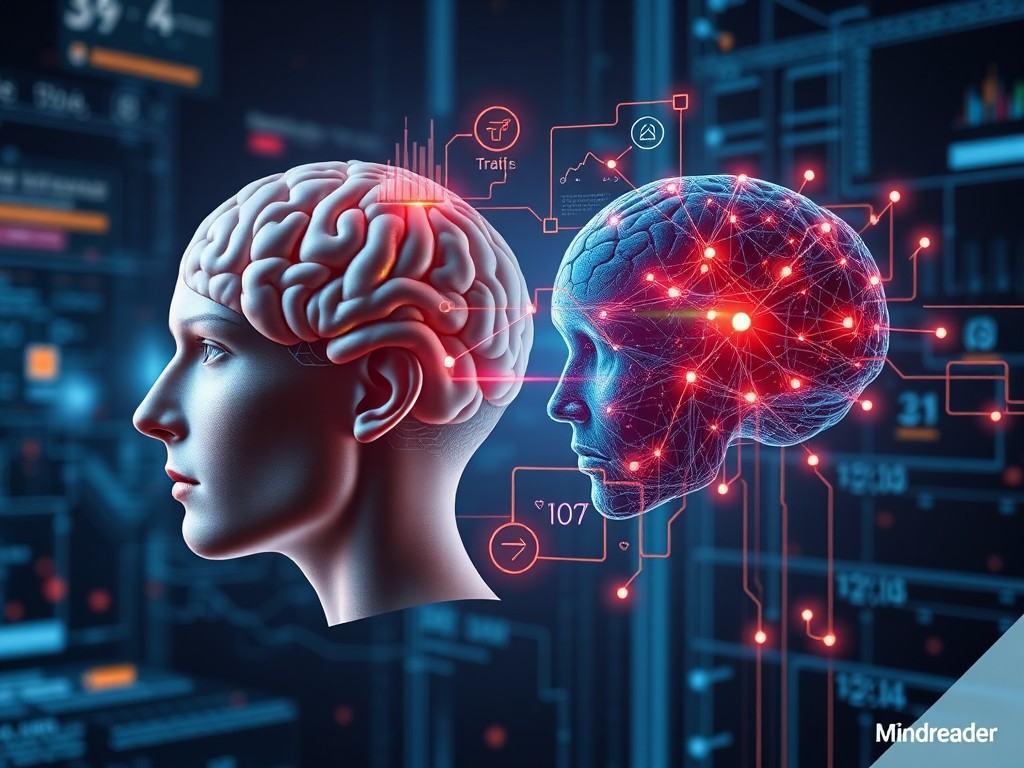In the realm of artificial intelligence (AI), understanding and interpreting human personality is one of the most complex and fascinating challenges. At Mindreader, our AI systems leverage advanced technology to analyze and predict personality types, offering insights that can transform how businesses and individuals interact. This article delves into the science behind Mindreader AI’s approach to understanding personality types and how this knowledge is applied to enhance user experiences.
The Foundation of Personality Analysis
Personality analysis has long been a subject of interest in psychology, with various theories and models developed to understand human behavior and traits. One of the most widely recognized frameworks is the Big Five Personality Traits, which categorizes personality into five dimensions: openness, conscientiousness, extraversion, agreeableness, and neuroticism. These traits provide a comprehensive understanding of an individual’s personality and behavior.
Another popular model is the Myers-Briggs Type Indicator (MBTI), which classifies personalities into 16 distinct types based on preferences in four dichotomies: introversion vs. extraversion, sensing vs. intuition, thinking vs. feeling, and judging vs. perceiving. These models offer valuable insights into personality, which Mindreader AI utilizes to deliver personalized experiences and enhance client interactions.
How Mindreader AI Analyzes Personality Types
Mindreader AI employs sophisticated algorithms and machine learning techniques to analyze and interpret personality types. The process involves several key components:
- Data Collection: To understand personality types, Mindreader AI collects data from various sources, including user interactions, behavioral patterns, and responses to specific stimuli. This data can be gathered from surveys, social media activity, and direct interactions with digital interfaces, enabling AI-driven behavioral analysis.
- Natural Language Processing (NLP): NLP is a critical technology in analyzing text-based data. By examining language patterns, sentiment, and context, Mindreader AI can infer personality traits from written communication. For instance, the way users express themselves in emails or social media posts can reveal aspects of their personality, enhancing personalized marketing and customer service strategies.
- Machine Learning Models: Using machine learning, Mindreader AI can identify correlations between personality traits and behavioral data. These models are trained on large datasets to recognize patterns and make accurate predictions about personality types based on new data, enabling real-time insights for better client engagement.
- Integration with Psychological Models: Mindreader AI integrates established psychological models, like the Big Five or MBTI, to frame its analysis. By mapping behavioral data to these models, the AI provides a structured understanding of personality traits and their implications, helping businesses create more effective personalized experiences.
Applications of Personality Analysis
Understanding personality types through AI has numerous practical applications:
- Personalized Marketing: By analyzing customer personalities, businesses can tailor their marketing strategies to resonate with different personality types. For example, a campaign targeting conscientious individuals might emphasize organization and reliability, while one aimed at extraverts might focus on social engagement and excitement. Mindreader AI allows for highly targeted AI-driven marketing campaigns.
- Enhanced Customer Service: Personality insights enable customer service teams to adapt their communication styles to better meet individual needs. A service representative can adjust their approach based on whether a customer prefers detailed explanations or quick, concise responses, improving customer satisfaction and loyalty.
- Product Development: Businesses can use personality data to design products and features that cater to different personality types. For instance, a product aimed at high openness individuals might focus on creativity and novelty, while one for high conscientiousness might emphasize practicality and efficiency. Mindreader AI helps businesses align products with customer preferences.
- Team Dynamics: In organizational settings, understanding team members’ personalities can improve collaboration and productivity. AI insights can help managers assemble balanced teams and foster effective communication and cooperation, boosting organizational performance.
Ethical Considerations
While the benefits of personality analysis through AI are significant, it is essential to address ethical considerations. Ensuring privacy and data security is paramount. Mindreader AI adheres to strict data protection regulations and ethical guidelines to safeguard user information and maintain transparency.
Users must be informed about data collection and usage practices, and their consent should be obtained. Ethical AI practices also involve ensuring that personality analysis is used to enhance user experiences and not for manipulative or discriminatory purposes.
Conclusion
The science behind Mindreader AI’s understanding of personality types is grounded in advanced algorithms, machine learning, and established psychological models. By analyzing data from various sources and applying sophisticated analytical techniques, Mindreader AI provides valuable insights that enhance personalization in marketing, customer service, product development, and team dynamics. As technology continues to advance, Mindreader remains committed to ethical practices and ensuring that personality analysis serves to benefit users and businesses alike.
By integrating personality insights into various applications, Mindreader AI is revolutionizing how we interact with technology and understand human behavior, providing deeper insights for AI-driven customer engagement and transforming business-client interactions.




